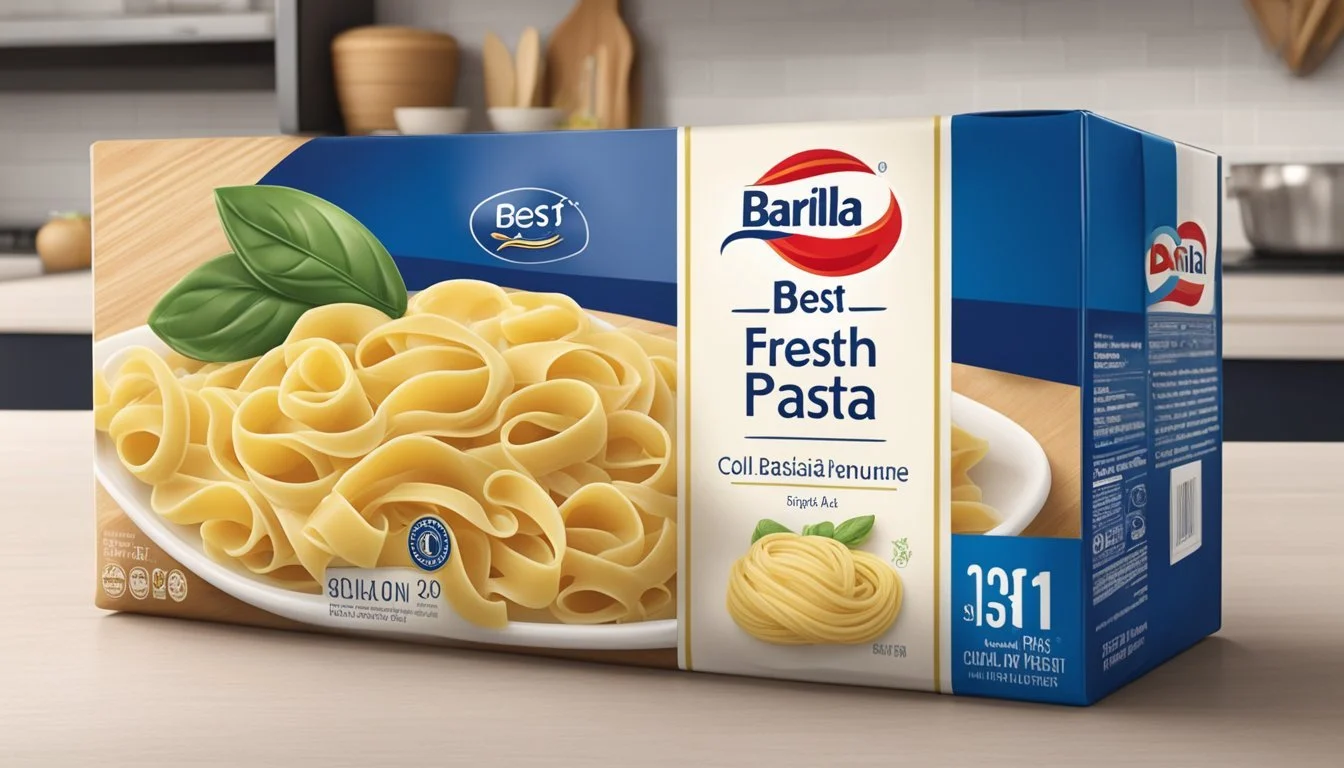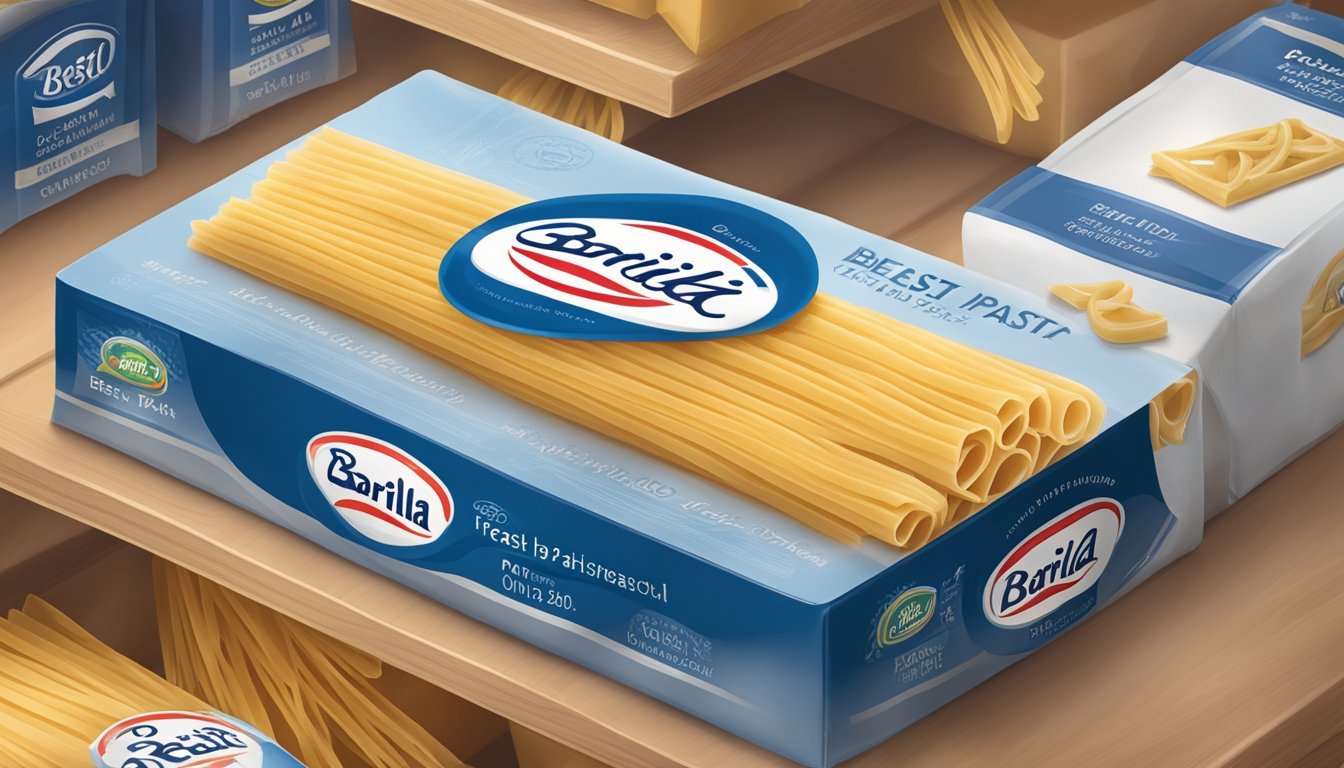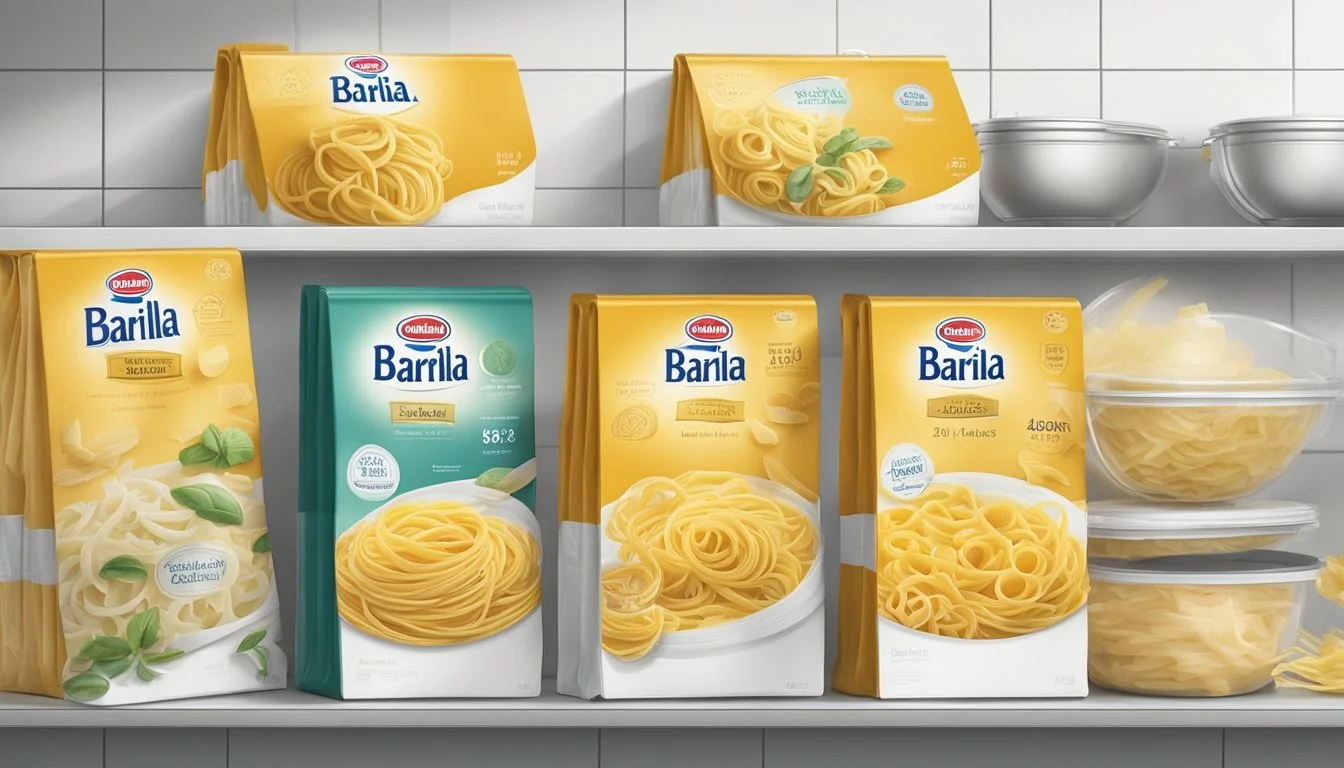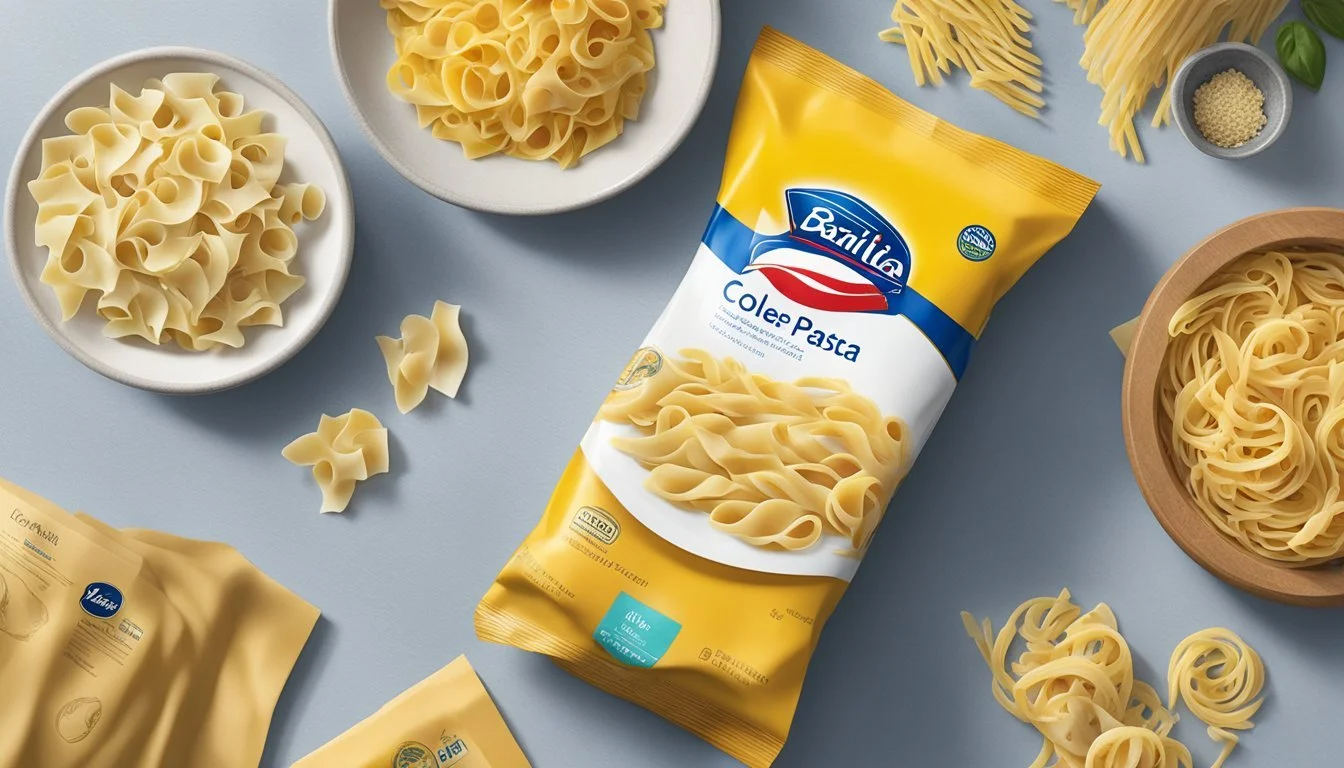How Long Does Barilla Collezione Fresh Pasta Last?
Shelf Life Explained
Understanding the shelf life of fresh pasta is essential for both safety and quality. Barilla Collezione, a popular brand of pasta (What wine goes well with pasta?), emphasizes the importance of freshness in their pasta products. Fresh pasta, unlike dried pasta which can last for 1-2 years beyond its "best by" date, has a shorter lifespan. Barilla recommends using their pasta by the date indicated on the package to ensure the best quality and taste.
However, the exact duration that fresh pasta remains at peak quality can vary based on storage conditions. Refrigeration can extend the freshness of Barilla Collezione fresh pasta typically up to 4-5 days beyond the "best by" date. While it can last a couple of days when stored properly in the refrigerator, for those looking to preserve freshness for a longer period, freezing is an option that can significantly extend the life of fresh pasta.
In the freezer, Barilla Collezione fresh pasta can maintain its quality for several months. This flexibility allows consumers to enjoy fresh-tasting pasta well beyond the typical refrigeration window, as long as it is stored correctly. Proper storage is key to preventing spoilage and ensuring the pasta remains safe to eat when prepared later on.
Understanding Fresh Pasta
Fresh pasta is a delicate and perishable food item that demands proper storage conditions to maintain its quality. It differs significantly from dry pasta due to its higher moisture content and inclusion of eggs.
Composition and Types
Fresh pasta is typically made from a simple dough consisting of wheat flour and eggs, which impart a tender texture and rich flavor. Barilla Collezione, for example, offers a range of fresh pasta types such as tortellini, lasagna, and spaghetti. The presence of eggs and moisture in fresh pasta creates an environment that is more susceptible to spoilage, making it a highly perishable food.
Factors Affecting Fresh Pasta Shelf Life
Several variables influence the shelf life of fresh pasta:
Moisture: High moisture content can lead to a shorter shelf life due to the potential for microbial growth.
Packaging: Proper packaging is essential for protecting fresh pasta from contaminants and extending its shelf life.
Storage Conditions: Fresh pasta should be stored in a refrigerator at a consistent and cool temperature to slow down the spoilage process.
For optimal quality, it is recommended to consume fresh pasta according to the "best if used by" date provided by manufacturers like Barilla.
Storage Guidelines
When storing Barilla Collezione fresh pasta, one must consider the environment that will best preserve its quality. Here are specific guidelines to ensure that the pasta maintains its optimal taste and texture.
Proper Refrigeration Practices
Fresh pasta should be refrigerated promptly to maintain quality. For Barilla Collezione products, users should store the pasta in the fridge before the "best if used by" date. The following practices are recommended:
Keep refrigerated: Store in a consistent temperature below 40°F.
Airtight container: To prevent drying, refrigerate fresh pasta in its original packaging or transfer leftovers to an airtight container.
Freezing Fresh Pasta
To extend the shelf life of fresh pasta, freezing is an effective method. When freezing pasta, it is crucial to follow these steps:
Prep for freezing: Lay out the pasta on a baking sheet and freeze for 1 hour.
Storage: Once slightly frozen, transfer the pasta into airtight containers or freezer bags to prevent freezer burn and dehydrating effects.
Pantry and Dry Storage
Dry pasta has a different storage method compared to fresh pasta. Barilla's dried pasta varieties should be kept in a pantry with these considerations:
Pantry conditions: Store in a cool, dry place to keep pantry bugs at bay.
Packaging: Keep the dried pasta in its original packaging, making sure the seal is intact to preserve its dryness and prevent exposure to pantry pests.
By adhering to these storage guidelines, one can ensure that Barilla Collezione fresh pasta is preserved at its highest quality, whether it is refrigerated, frozen, or stored in the pantry as dried pasta.
Shelf Life Details
Barilla Collezione fresh pasta offers a specific shelf life to ensure optimal taste and quality. It's vital for consumers to understand the differences in shelf life between unopened and opened packages, along with the implications of expiration dates for food safety.
Unopened vs Opened Packages
Unopened Packages:
Shelf Life: Barilla Collezione fresh pasta, while kept unopened and stored properly, generally maintains its quality for a considerably long shelf life.
Storage Tips: To maximize longevity, store the pasta in a cool, dry place.
Opened Packages:
Shelf Life: Once opened, the pasta should be consumed in a short period to preserve its taste and quality.
Storage Method: Opened pasta can be kept in the refrigerator but should be used within a few days post-opening.
Expiration Dates and Food Safety
Best By Dates:
Understanding Dates: 'Best if used by' or 'best by' dates on Barilla packages are there to inform consumers when the pasta is expected to be at its peak quality.
Post-Date Consumption: Pasta consumed shortly after the 'best by' date may still be safe, but quality may not be at its best.
Expired Pasta:
Quality Over Time: Noodles and macaroni past their expiration date may experience changes in texture, flavor, and nutritional value. It is recommended to adhere to the 'best if used by' dates for the best experience.
Safety Concerns: While shelf-stable dried pasta may not be dangerous after the 'best by' date, the quality assurance diminishes, hence it's crucial to examine expired pasta closely for any signs of spoilage before consumption.
Preparing and Cooking Pasta
When preparing Barilla Collezione fresh pasta, one must ensure to boil it properly and pair it with a complementary sauce to enhance the taste and quality of the meal.
Boiling and Sauce Pairings
The quality of pasta is fundamentally influenced by its cooking method and the sauce it is served with. For Barilla Collezione fresh pasta, the boiling water should be generously salted to infuse the pasta with flavor. Approximately 1 tablespoon of salt per 4 quarts of water is recommended. Once the water is boiling, pasta should be gently added to the pot and stirred to prevent sticking.
Sauce pairings play a crucial role in the meal's outcome. The sauce should complement the pasta shape and its texture. For example:
Long, flat pasta shapes like fettuccine embrace cream-based sauces well.
Short, tubular shapes such as penne are ideal for meat or vegetable chunky sauces, as they hold the sauce inside.
Optimal Cooking Times
Cooking times are pivotal in achieving the desired pasta texture, or 'al dente'—cooked through but still firm to the bite. Different shapes and sizes of pasta require variable cooking times. A general guideline for Barilla Collezione fresh pasta includes:
Thin shapes (e.g., capellini): Less than 4 minutes
Standard shapes (e.g., spaghetti): 6-7 minutes
Thicker shapes (e.g., fettuccine): 7-8 minutes
Cooking Barilla Collezione fresh pasta to the right texture ensures the pasta absorbs the flavors of the sauce, enhancing the overall taste of the dish. It is advisable to always refer to the package instructions for precise cooking times. After cooking, one should promptly combine the pasta with the sauce to allow for the flavors to meld.
Signs of Spoilage
Proper storage and awareness of spoilage signs are essential when dealing with Barilla Collezione fresh pasta. Recognizing when pasta has gone bad can prevent foodborne illnesses, typically signaled by changes in appearance, smell, and texture.
Visual and Olfactory Indicators
Discoloration: Fresh pasta should have a uniform color. If spots or signs of mold appear, it indicates spoilage. Mold can be white, green, or black, making the pasta unsafe for consumption.
Texture Changes: Fresh pasta that has turned slimy or sticky is no longer good. This texture change is a cue that bacteria have started to grow.
Odor: A rancid or sour smell is a clear indicator that fresh pasta should not be eaten. Olfactory signs are often the first detectible indication of spoiled food.
Health Risks: Recognizing Foodborne Illnesses
Foodborne Illness Symptoms: After consuming spoiled pasta, one might experience symptoms like nausea, vomiting, or diarrhea, indicative of food poisoning.
Immediate Attention: If any signs of foodborne illness arise after eating pasta that seemed questionable, medical attention should be sought. Food poisoning can escalate rapidly and should be treated with urgency.
The Life Span of Leftovers
When dealing with leftovers, particularly Barilla Collezione fresh pasta, understanding the correct storage and reheating methods is crucial for preserving both safety and taste.
Refrigerating Cooked Pasta
Once cooked, fresh pasta should be stored in the refrigerator to extend its shelf life while maintaining safety and taste. For Barilla Collezione fresh pasta, the ideal time frame for refrigerated leftovers is typically up to 5 days. Cooked pasta should be placed in an airtight container or a tightly sealed plastic bag to prevent drying out and absorbing odors from other foods.
Homemade pasta: 4-5 days
Barilla pasta: Follow the "best if used by" date, then 3-5 days once cooked
Fresh pasta (general): 1-3 days if store-bought, 3-5 days if freshly made at home
Reheating and Quality Maintenance
Reheating leftover pasta properly is essential to retain its quality. One should reheat only the amount of pasta that will be eaten, using either a microwave or stovetop with a bit of added water to maintain moisture. Pasta's quality can diminish after reheating, so it is advisable to do so only once. Leftover pasta that has been mixed with sauce may have a slightly reduced shelf life due to the additional ingredients.
Reheat gently to avoid overcooking
Add a small amount of water or sauce to keep the pasta moist
Following these guidelines will help ensure that leftover Barilla Collezione fresh pasta remains enjoyable and safe to consume within the appropriate timeframe after initial preparation.
Maximizing Fresh Pasta Enjoyment
For the best taste and texture, one must be mindful of properly pairing Barilla Collezione fresh pasta with suitable sauces and understanding creative ways to use pasta that is past its 'Best By' date.
Pairing Pastas with Different Sauces
Barilla Collezione Fresh Pasta offers a variety of shapes perfect for different sauce pairings. Tortellini, with its folded, delicate edges, is ideal for capturing the richness of cream-based sauces. When dealing with filled tortellini, it is essential to consider the filling – cheese tortellini pairs wonderfully with a simple butter sage sauce, while meat-filled options might harmonize better with a heartier marinara.
Pasta Type Preferred Sauce Cheese-filled Tortellini Butter Sage Sauce Meat-filled Tortellini Marinara Sauce
Creative Uses for Past 'Best By' Pasta
When Barilla Collezione pasta has surpassed its 'Best By' date, it doesn't necessarily mean it is no longer usable. While always checking for signs of spoilage, one can repurpose this pasta into baked dishes where the crispy edges add a delightful texture. Creative cooking comes into play as chefs may consider incorporating leftover pasta into frittatas or casseroles where the pasta's slightly altered texture is less perceptible, yet still enjoyable.








